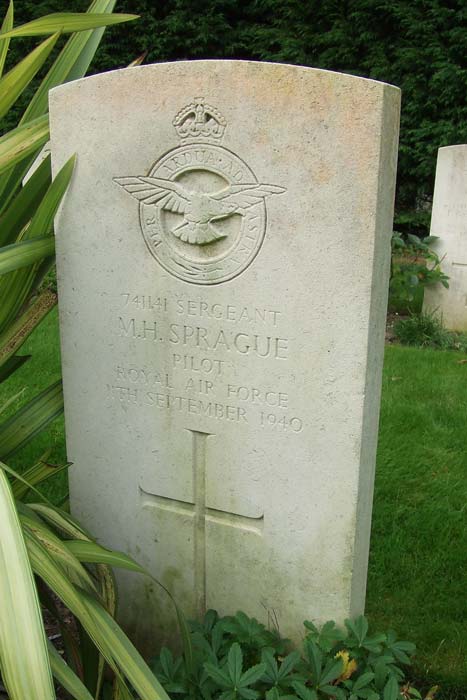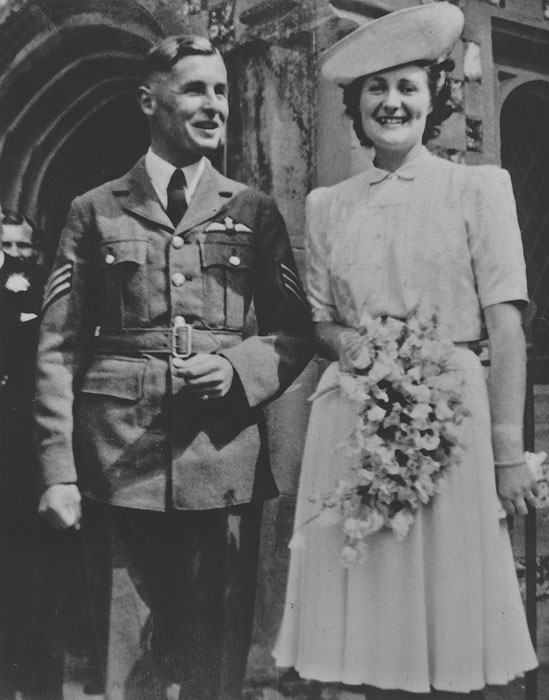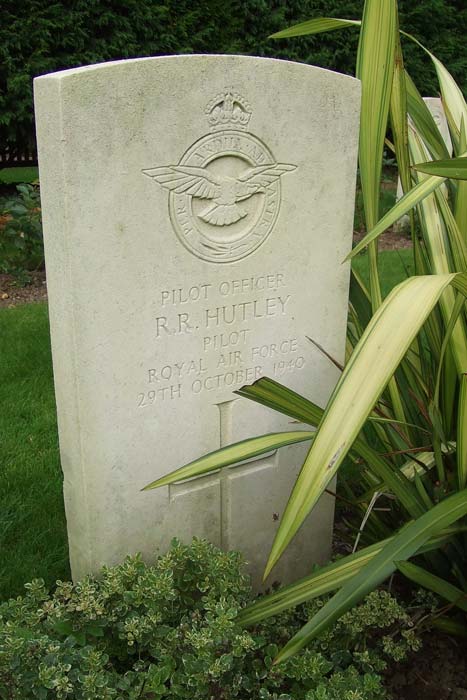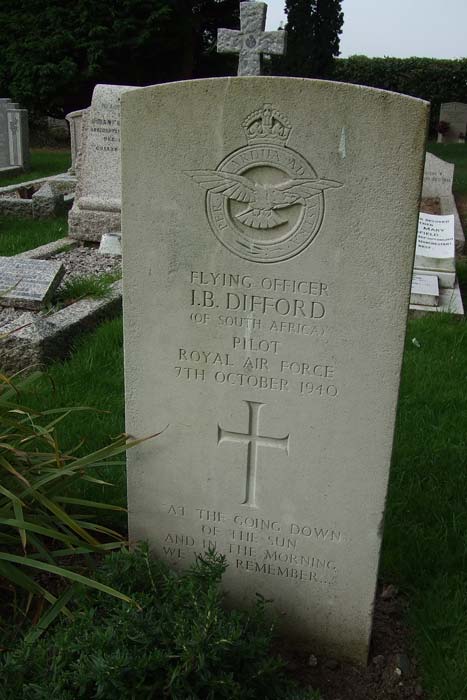
Battle of Britain Day 15th September
The churchyard of St. Andrew in Tangmere is situated to the west of the R.A.F. Aerodrome at Tangmere. It is in Church Lane and has been used for the burial of airmen from this station both before and since the 1939-1945 War.
There are 39 Commonwealth burials of the 1939-1945 War, all airmen, one of whom is unidentified. There are 13 German Air Force burials here, one of whom is unidentified. The majority of these airmen were killed during the Battle of Britain. The Commonwealth war graves are grouped in three rows on the western side of the church and beside them are two rows of German graves.
I have limited this piece to those pilots of the Battle of Britain. If you wish to see all those that gave and are at St Andrews churchyard, Tangmere. Then please follow this link:
I must also acknowledge that a greater part of this information comes from a enormous research by Kenneth G Wynn. His book is called “Men of the Battle of Britain” An absolute must for anyone interested in this subject.
Flying Officer: Percy Burton, South African
Burton learned to fly with the University Air Squadron and was called up in October 1939. After completing his training at FTS Cranwell he arrived at 6 OTU Sutton Bridge on 22nd June 1940 to convert to Hurricanes and joined 249 Squadron at Church Fenton on 21st July.
On the morning of 27th September the squadron engaged a formation of Me110s of V/LG1. The Hurricanes broke the Germans’ two defensive circles and the enemy aircraft went south at low level, heading for the Channel. Burton pursued one of the 110s for about forty miles, often at little more than treetop height, but the German pilot, the Gruppe Kommandeur of V/LGI, Hauptmann Horst Liensberger, was unable to shake him off. Just north of Hailsham, Burton’s guns stopped firing (presumably due to being out of ammunition) and the two aircraft skimmed over the rooftops.
The Hurricane, V6883, was above and behind the Me110. Burton suddenly banked and made what appeared to be an attack. Both machines lurched and an object spun away. The tail unit of the 110 dropped into a field, followed by the rest of the aircraft. The falling object was the wingtip of Burton’s Hurricane. His aircraft crashed into a huge oak tree on New Barn Farm, throwing its dead pilot clear and burning itself out in a field.
He was put forward for a posthumous VC but instead got a mention in despatches, due to lack of corroborating evidence. A housing estate now exists where this took place, he has been remembered as one of the roads has been named Burton Walk. But I wonder how many people there know why. Percy was 23 years old.
Squadron Leader: Ceasar Hull: Rhodesia.
Squadron Leader Caesar Barrand Hull, DFC was a Royal Air Force flying ace during the Second World War, noted especially for his part in the fighting for Narvik during the Norwegian Campaign in 1940, and for being one of “The Few”—the Allied pilots of the Battle of Britain, in which he was shot down and killed.
Flight Sergeant: M H Sprague, British.
Sprague joined 602 Squadron at Drem on 18th June.The squadron relieved 145 Squadron at Westhampnett on 12th August and was soon in action. Sprague was shot down in combat in Spitfire N3226 over Dorchester on 25th August. He baled out, unhurt, and was rescued from the sea by a Walrus aircraft. His Spitfire came down in the sea off Portland.
On 11th September Sprague was shot down and killed in combat with Me110’s south of Selsey Bill. His Spitfire, N3282, crashed into the Channel. Sprague’s body was washed ashore at Brighton on 10th October. His wife refused to accept his loss and started standing at the end of the runway waiting for him to return.
This upset the pilots as they thought it bad luck. This scenario was used in a television programme called “A piece of cake” from a fictional book written by Derek Robinson.
P/O. R R Hutley
Richard Ralph Hutley was born in March 1918 in Orsett, Suffolk and joined the RAFVR about November 1938 as an Airman u/t Pilot. He was called up on 1st September 1939, completed his training and was commisioned. His first posting was No.1 School of Army Co-operation at Old Sarum.
With Fighter Command needing to replace its losses he was then posted to 6 OTU Sutton Bridge on 4th September 1940 with a further spell at 5 OTU to convert to Hurricanes. On 21st September he was posted to 32 Squadron at Acklington, moving to 213 Squadron at Tangmere on 26th October.
On the 29th he was shot down in combat off Selsey Bill in Hurricane V7622 and baled out into the sea. He was picked up by the Selsey lifeboat but they could not revive him. Hutley was 22.
Flight Officer. Ivor Benison Difford.
Ivor Difford was from Johannesburg. South Africa.
Difford arrived at 6 OTU, Sutton Bridge on September 11th 1940 He converted to Hurricanes and joined 85 Squadron at Church Fenton on the 23rd. He then moved to 607 squadron at Tangmere on 2nd October.
He was killed on the 7th October in a mid air collision and crashed at Eartham Farm, Slindon. He was 30 years old.
Pilot Officer: Johannes Roelof Stephanus Oelofse
Johannes Oelofse. Another brave South African .
He joined 43 squadron in February 1940.
He was shot down over the Channel on August 8th, 1940. Pilot Officer Oelofse’s body was washed ashore at Worthing on September 25th – identified by personal effects found in his pockets.














